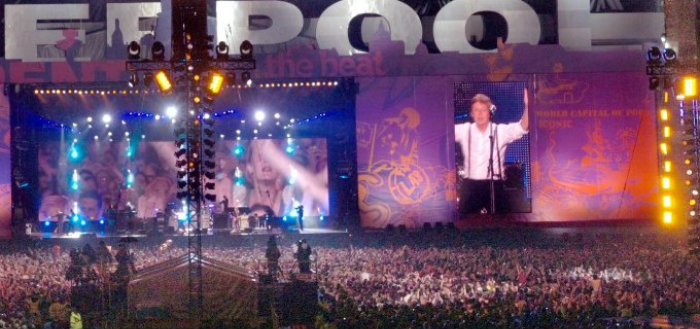A decade ago Liverpool was largely known outside of the city for The Beatles and football.
But in just 10 years, things have changed and its repertoire has grown.
Before 2003, to utter Liverpool and culture in the same breath would have undoubtedly caused a raised eyebrow or two. At this time there were aspirations to be a premier European city, but in many ways it fell short.
It had culture, it had heritage, it had passion, it had huge potential.
What it needed was a catalyst.
And this came in the shape of the bid to become European Capital of Culture in 2008. It was our moment to shine and show the world exactly what Liverpool could offer.
A programme was developed which put culture at the heart of everything – using it as a springboard to rejuvenate and redevelop the city.
More than £4billion was invested in the physical transformation of the city. Areas which were beginning to look tired were brought back to life and reach their full potential with the creation of developments including Liverpool ONE, the Echo Arena and Convention Centre and the opening of the cruise liner terminal. And some of the city’s best-loved gems also benefited from extensive renovations including St George’s Hall, the Bluecoat and World Museum Liverpool.
The unprecedented collaboration of the public and private sector made it possible to achieve a common goal and resulted in a record breaking 15 million cultural visits and an overall economic impact of £800million in 2008 alone.
But these figures, outstanding as they are, do not tell the whole story. The real success was the reaction of people, not only in Liverpool but across the world.
The cultural title changed perceptions of the city. Liverpool was on an unrivalled stage where we demonstrated the amazing diversity of high art, big outdoor free events and provocative new theatre.
The journey of 2008 began in stunning fashion with The People’s Opening. The bar was set and remained high throughout the year. Even today, just the mention of Sir Paul McCartney at Liverpool Sound, The Shankly Show, King Lear, Klimt at Tate Liverpool, the MTV Music Awards, the Tall Ships’ Races and Go Superlambananas elicits an enthusiastic and passionate response. And then of course you could talk about a 50 foot mechanical spider which explored the city’s streets – a 2008 highlight for many and the start of the city’s love of large scale street theatre.
Imaginations were captured, hearts were won.
It was declared
“one of the most successful Capital of Culture programmes”
by the President of the European Commission, José Manuel Barroso.
And as 2008 ended on an emotional high, we wanted the message to be loud and clear – Liverpool has a unique cultural offer and we will do everything we can to celebrate, promote and build-on it.
True to form, the city has not rested on its laurels. We have continued to host high-quality events, with internationally renowned brands which result in Liverpool being on the radar of a world-wide audience.
Since capital of culture, the city’s reputation for putting on unmissable, free outdoor events has gone from strength to strength. Marking the centenary of one of the city’s most enduring symbols – the Liver Building – a mind-blowing 3D Son et Lumiere display brought the building to life, creating a digital homage to the Liverpool’s history.
There was the sense that this was just giving you a taster of what Liverpool was capable of.
And in April 2012, Liverpool elevated itself to a whole new realm of street theatre – Sea Odyssey announced a new chapter in the city’s events history.
There are very few cities in the world, never mind this country, that would hand their streets over to the whim of such a creative tour de force as Royal de Luxe. But we know that Liverpool is somewhere very special.
The architecture and historical nature of our buildings are the perfect stage for any performance, and one of the many lessons we learnt from 2008 is to maximise our existing cultural assets – particularly when many of those assets are unrivalled.
For three days the city came to a standstill as hundreds of thousands of people followed three very special giant visitors on an emotional journey. They touched every single person with onlookers feeling a genuine connection to them and the moving story which was played out in such a beautiful, poignant way.
The aftermath of Sea Odyssey was quite simple. In terms of culture, the city would never be the same again.
We always knew what the city could achieve. We knew it could put on a breath-taking show which would go down in the city’s history as one of its most awe-inspiring events. And now the whole world knows exactly what Liverpool can do.
Liverpool’s story has all the ingredients of a blockbuster on the silver screen – with excitement, drama, adventure, tears and laughter, and most importantly a dream fulfilled.
But there are countless sequels still to come – the city’s remarkable transformational journey is only just beginning.


